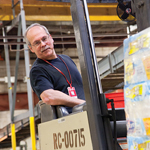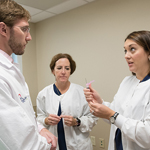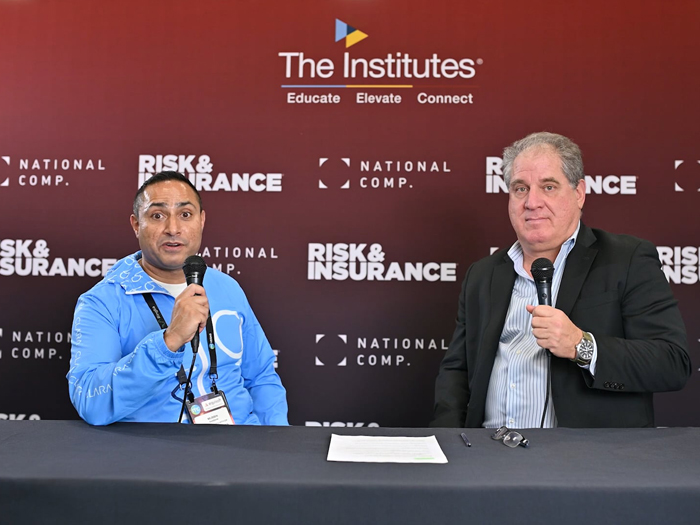2016 Teddy Awards: Honorable Mention
Advocating for Injured Workers

Cottage Health was having trouble returning injured workers to the job. In 2014, the nonprofit hospital system recorded an all-time high of 1,953 recordable lost days.
In 2016, the three-hospital system in the Central Coast Region in California is on track to reduce that number to 400 – an 80 percent decrease in lost work days.
The health system managed the impressive turnaround by modifying its transitional return to work program, hiring a workers’ compensation case manager and working to educate both managers, employees and medical providers about the opportunities and benefits of returning workers to the job as quickly as possible.
“Keeping somebody engaged at work returns them to their full capacity sooner,” said Angeli Mancuso, manager, employee health and safety at Cottage Health. “There’s a psychological component. When you get used to not working, even two weeks off, sometimes it makes it very difficult to come back.”
Rose Hatmaker, workers’ compensation case manager at Cottage Health, says the health care organization “works as an advocate for the injured workers.”
“It’s a team effort to return injured workers to a productive lifestyle in their position,” she said.

Angeli Mancuso, manager, employee health and safety, Cottage Health
Hatmaker helps employees navigate the workers’ compensation system by directly communicating with occupational health physician partners, expediting physical therapy appointments, discussing treatment plans with physicians and assisting employees with any questions they have related to claims process, handled by third-party administrator Sedgwick.
Hatmaker also put together a job bank that helps her match jobs and abilities within the health system with injured employees.
But the worker advocacy program required pushing our culture forward, said Mancuso.
While she worked with the management team to educate them on the benefits of bringing injured employees back on modified duty, Hatmaker was brought on board in 2015 to work with the employees, physicians and service providers.
Cottage Health uses a tiered return-to-work program that first tries to place injured employees in their home department. If physical limitations make that impossible, employees are assigned to a different department in their own hospital or another in the system. As a last resort, employees are assigned to a nonprofit organization as a volunteer. The last option was added to the program as part of the goal to reduce lost days.
“You can utilize their brain if they are physically unable to do the job.” Angeli Mancuso, manager, employee health and safety, Cottage Health
Use of the modified duty options have had peaks and valleys over the years, said Molly Kellogg, employee health and safety consultant, “but we’ve never had as much buy-in or variety as we do now.”
Mancuso remembered one manager who declined to bring back an injured physical therapist because of limitations. After another therapy department in the hospital agreed to bring the therapist on to speak to patients on the phone, the first manager changed his mind. They ended up sharing the employee’s time, she said.
“You can utilize their brain if they are physically unable to do the job,” Mancuso said.
Cottage Health also, of course, strives to prevent injuries from occurring, and has a robust training program and safety tools to maintain employee health.
A safe-patient handling system is a key part of that, and any new construction or remodeling almost always includes ceiling lifts in all rooms as well as mobile equipment at existing facilities. When the program began in 2009 at a cost of $6 million, there were 41 preventable patient handling injuries. In 2015, there was one.
The health care system also concentrated on its sharp safety program to prevent blood exposure among health care workers. Research at the hospitals revealed that surgical technicians had the highest incidence of needle sticks and other sharps injuries. It had been presumed that resident physicians had the highest rate.
By increasing education, the needle stick rate for surgical technicians decreased from 25 percent in 2014 to 14 percent in 2015.
Cottage Health begins its safety training at new employee initiation sessions and pursues safety awareness at departmental staff meetings. In addition it has a multi-disciplinary committee that includes representatives from many areas throughout the system to focus on “environments of care.” &
_______________________________________________________
Read more about the 2016 Teddy Award winners:
 Bringing Focus to Broad Challenges: Target brings home a 2016 Teddy Award for serving as an advocate for its workers, pre- and post-injury, across each of its many operations.
Bringing Focus to Broad Challenges: Target brings home a 2016 Teddy Award for serving as an advocate for its workers, pre- and post-injury, across each of its many operations.
 The Road to Success: Accountability and collaboration turned Hampton Roads Transit’s legacy workers’ compensation program into a triumph.
The Road to Success: Accountability and collaboration turned Hampton Roads Transit’s legacy workers’ compensation program into a triumph.
 Improve the Well-Being of Every Life: Excela Health changed the way it treated injuries and took a proactive approach to safety, drastically reducing workers’ comp claims and costs.
Improve the Well-Being of Every Life: Excela Health changed the way it treated injuries and took a proactive approach to safety, drastically reducing workers’ comp claims and costs.
 The Family That’s Safe Together: An unwavering commitment to zero lost time is just one way that Harder Mechanical Contractors protects the lives and livelihoods of its workers.
The Family That’s Safe Together: An unwavering commitment to zero lost time is just one way that Harder Mechanical Contractors protects the lives and livelihoods of its workers.
More coverage of the 2016 Teddy Awards:
Recognizing Excellence: The judges of the 2016 Teddy Awards reflect on what they learned, and on the value of awards programs in the workers’ comp space.
Fit for Duty: 2013 Teddy Winner Miami-Dade County Public Schools is managing comorbid risk factors by getting employees excited about healthy living.
Saving Time and Money: Applying Lean Six Sigma to its workers’ comp processes earned Atlantic Health a Teddy Award Honorable Mention.
Caring for the Caregivers: Adventist Health Central Valley Network is achieving stellar results by targeting its toughest challenges.
Advocating for Injured Workers: By helping employees navigate through the workers’ comp system, Cottage Health decreased lost work days by 80 percent.
A Matter of Trust: St. Luke’s workers’ comp program is built upon relationships and a commitment to care for those who care for patients.
Keeping the Results Flowing: R&I recognizes the Metropolitan Water Reclamation District of Greater Chicago for a commonsense approach that’s netting continuous improvement.










